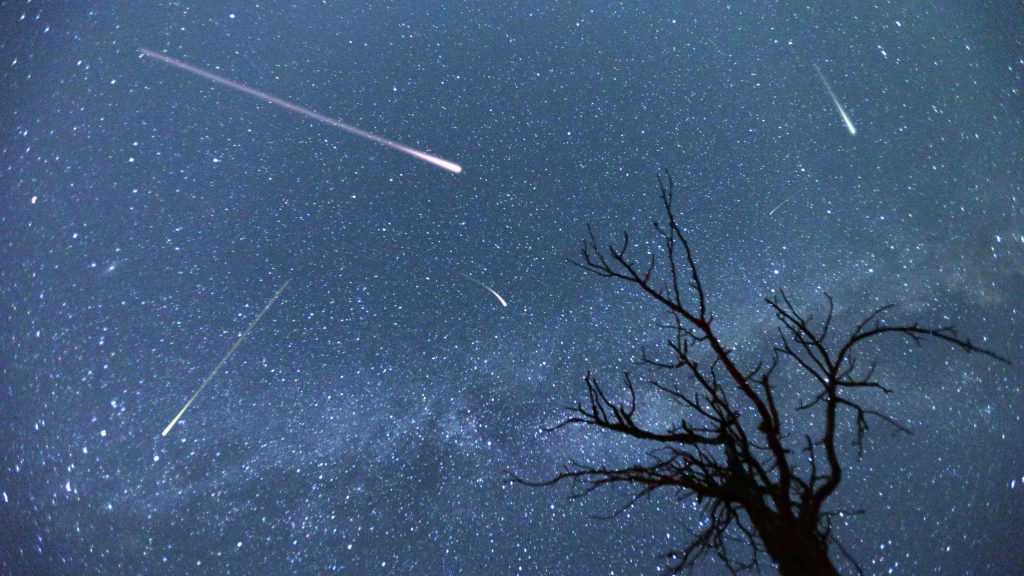Imagine gazing up at the night sky, wrapped in the cozy blanket of darkness, when suddenly, a streak of light zips across the canvas, leaving you in awe. This is the magic of meteors, often dubbed "shooting stars", and there's a special day dedicated to these celestial wonders – National Meteor Watch Day. Celebrated on June 30th, this day is not just about watching the sky; it's a call to arms for amateur astronomers and curious sky gazers alike to record and share their observations. Originating from the efforts of the International Meteor Organization (IMO), established in 1924, this day underscores the thrill of connecting with the cosmos and contributing to the scientific community's understanding of meteor phenomena. Whether you're an experienced observer with a keen eye for detail or someone who's captivated by the beauty of the night sky, National Meteor Watch Day offers a unique opportunity to join a global community in celebrating and studying these fleeting natural spectacles.
Key Takeaway
Timeline
Day Activities
-
Getting Started: Before dusk, gather your essentials: a comfy blanket, a reclining chair, and maybe a warm drink. Find a spot away from city lights for the best view. Lying flat on your back, give your eyes time to adjust to the darkness. This setup is perfect for catching those fleeting streaks of light across the sky.
-
Observation Tips: Keep a notebook handy to jot down times and directions of the meteors you spot. If you're tech-savvy, a stargazing app can help identify constellations and maybe even predict meteor showers. Remember, patience is key; these celestial wonders don't follow a schedule.
-
Sharing the Experience: Why keep the excitement to yourself? Invite friends or family for a night of meteor watching. Sharing observations can double the fun and maybe even spark a new interest in astronomy among your group. Don't forget to share your findings with local astronomy clubs or online communities to contribute to the collective knowledge.
Interesting Facts
1. Origins in Science
National Meteor Watch Day traces back to the International Meteor Organization, founded in 1924.
2. Aiming for Public Engagement
This day boosts public interest in meteor science and gathers crucial observational data.
3. An All-Ages Activity
Meteor watching is fun, educational, and suitable for all ages.
4. Cosmic Debris Showers
Meteor showers happen when Earth passes through debris from comets or asteroids, creating shooting stars.
5. Uniting Sky Gazers
National Meteor Watch Day unites enthusiasts under the night sky, emphasizing the joy and importance of scientific observation.
Why We Love This Day
-
Stargazing Becomes a Group Activity: On National Meteor Watch Day, folks from all walks of life gather with friends, family, or local astronomy clubs to watch the night sky light up with meteors. It's not just about looking up; it's about sharing experiences, stories, and maybe a blanket or two. This communal aspect turns a simple act of observation into a memorable event.
-
Contributes to Science: Believe it or not, every time someone gazes upward and jots down notes about a meteor, they're helping scientists big time. Amateur astronomers play a crucial role in collecting data that might otherwise slip through the cracks. This grassroots contribution to science helps experts understand meteor patterns, origins, and frequencies better. So, while you're out there making wishes on shooting stars, you're also a part of a global scientific endeavor.
-
Sparks Curiosity and Education: There's something about the mystery and beauty of meteors streaking across the sky that sparks curiosity in people of all ages. National Meteor Watch Day serves as a perfect opportunity for educational outreach, inspiring future astronomers and scientists. Schools, museums, and planetariums often jump on board with special programs and activities. It's a day where learning and fun collide, encouraging everyone to look up and wonder about the universe.
Past & Future Dates
| Month | Day | Year |
|---|---|---|
| JUNE | 30 | 2022 |
| JUNE | 30 | 2023 |
| JUNE | 30 | 2024 |
| JUNE | 30 | 2025 |
| JUNE | 30 | 2026 |
| JUNE | 30 | 2027 |
| JUNE | 30 | 2028 |
FAQ
Is there a meteor shower July 30?
Indeed, July 30 packs a celestial double feature with the Southern Delta Aquariids peaking on July 29 and 30, while the Alpha Capricornids take the stage from July 30 to 31. Mark your calendars – it's a prime time for sky gazers to catch both showers lighting up the night.
What national day is on June 30th?
NATIONAL OOTD DAY | June 30.
What time is best to see the meteor shower tonight?
For a stellar show, aim to scan the skies from midnight until dawn. During these hours, particularly just before the sun threatens to rise, you're in the sweet spot – your side of Earth faces head-on into the cosmic debris, upping your chances of witnessing a meteoric performance.
What meteor shower happens in June?
June brings the June Bootid meteor shower into view, with its radiant in the constellation Bootes. For observers in Mountain View, the radiant stays above the horizon all night long, meaning the shower will be dazzling observers with its meteors throughout the night.
